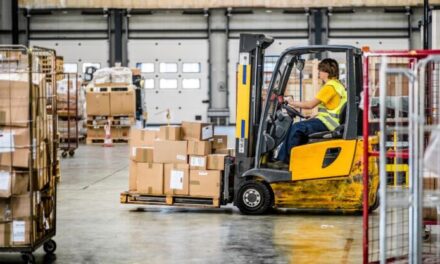 The number of accidents and injuries related to manual handling remain at alarming levels. The latest official statistics, for the year ending April 2011, released by the Health & Safety Executive late last year, show that more than 36,000 workers suffered a reportable injury when manual handling. Almost 28 per cent of these injuries were directly linked to lifting or putting down items while a further 19 per cent were related to unspecified handling, lifting or carrying. The figures, which include all injuries classed as serious or which led to more than three days off work, also reveal a steady downward trend over the last decade.
The number of accidents and injuries related to manual handling remain at alarming levels. The latest official statistics, for the year ending April 2011, released by the Health & Safety Executive late last year, show that more than 36,000 workers suffered a reportable injury when manual handling. Almost 28 per cent of these injuries were directly linked to lifting or putting down items while a further 19 per cent were related to unspecified handling, lifting or carrying. The figures, which include all injuries classed as serious or which led to more than three days off work, also reveal a steady downward trend over the last decade.
While this reduction is welcome the figures suggest employers could still do more to reduce or remove the risks associated with manual handling in the workplace. The best solution is to remove the need for manual handling but if this is not possible a suitable mechanical aid such as a goods lift or vehicle-mounted crane or platform lift is often the next best option.
During the year to April 2011 there were 36,244 accidents related to manual handling reported to the HSE under the Reporting of Injuries, Diseases and Dangerous Occurrences Regulations (RIDDOR). Of these, 10,063 were attributed to lifting or putting down, 6,128 to pulling, 1,544 to carrying and 7,221 to unspecified handling, lifting or carrying.
Manual handling continues to be the single biggest cause of all reported injuries in the workplace (36,244 out of 117,640 or 30.8 per cent). The HSE also reports around 158,000 new cases of musculoskeletal disorders, which includes those caused by manual handling, based on official statistics collated from a variety of sources. The average time off work through each injury was 7.2 days.
 The figures show that accidents leading to death, serious injury or a work absence of more than three days fell from 52,198 in the year ending April 2002 to 36,224 in the year ending April 2011. This represents a reduction of 30.6 per cent over the same period.
The figures show that accidents leading to death, serious injury or a work absence of more than three days fell from 52,198 in the year ending April 2002 to 36,224 in the year ending April 2011. This represents a reduction of 30.6 per cent over the same period.
It remains the employer’s duty to simplify their handling processes or provide employees with the tools and equipment to do their work more safely, efficiently and productively. There is a good choice of simple and inexpensive equipment such as the Penny Hydraulics range of cranes and tail lifts for commercial vehicles and goods lifts.
More information at: www.pennyhydraulics.com/hsestats


